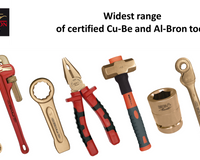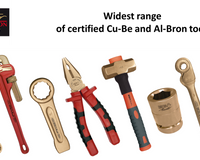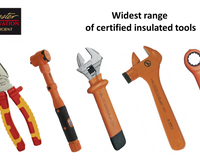Choosing the right safety shoes has a direct impact both on the safety as well as the productivity of the user. However, with so many options in the market promoting different features, it is hard to track what is important and what is not.
As it is always the case, the right solution will depend on several factors that every person, safety manager or purchase manager will have to assess:
The work environment (protection levels)
Understanding the environment in which a worker operates is the first step towards understanding the requirements that the right safety shoe should meet. This is especially important if a worker operates at oil & gas industries or near hazardous areas such as electricity.
In the case of heavy-duty work on rugged terrain, it is important that a safety shoe provides strong ankle protection, both against impact as well as against sprained angles.
In the presence of electricity, on the other hand, it is important that the safety shoes provide the worker with the necessary insulation. Considering that different shoes provide protection up to different voltage levels, it is important to know up to what voltage has a shoe been tested and certified at.
On the opposite side of the spectrum, if you work near electronic equipment it is important that the safety shoes provide with anti-static or di-electric features. If the equipment is highly sensitive you should be looking for an ESD certified safety shoe that will ensure the electrical discharge from your body and avoid damaging the equipment.
To know which are the shoes you need, it is important to understand the different subcategories and protective features category S safety shoes offer:
|
SB |
Basic requirements for safety footwear met - 200 joule Protection |
|
S1 |
200 joule Toecap Protection. Closed seat region (fully enclosed heel). Anti-static properties. Energy absorption of seat region. |
|
S2 |
200 joule Toecap Protection. Closed seat region (fully enclosed heel). Anti-static properties. Energy absorption of seat region. Water penetration and water absorption resistance. |
|
S3 |
200 joule Toecap Protection. Closed seat region (fully enclosed heel). Anti-static properties. Energy absorption of seat region. Water penetration and water absorption resistance. Plus penetration resistance. Cleated outsole. |
|
S4 |
200 joule Toecap Protection. All rubber or all polymeric footwear with anti-static properties. Energy absorption of seat region. |
|
S5 |
200 joule Toecap Protection. All rubber or all polymeric footwear with anti-static properties. Energy absorption of seat region. Plus penetration resistance. Cleated outsole. |
|
For the slip resistant rating: |
|
|
SRA |
Tested on ceramic tile wetted with dilute soap solution |
|
SRB |
Tested on steel with glycerol |
|
SRC |
SRA + SRB |
Regarding the protective features, the following are the descriptions of the coding used in the European Standard:
|
P |
Penetration resistance offered by a steel midsole. |
|
C |
Conductive footwear. |
|
A |
Anti-static footwear. |
|
HI |
Insulation against heat. |
|
CI |
Insulation against cold. |
|
E |
Energy absorption of seat region. |
|
WRU |
Water penetration and absorption resistance. |
|
HRO |
Heat resistant to 300 °C. |
Frequency of use (comfort levels)
We have all experienced how difficult it is to focus on what you´re doing if the safety shoes you are wearing are uncomfortable or painful. If this discomfort must be sustained over long hours, it can have a serious impact both on the worker´s health as well as his/her productivity.
The higher the frequency of use, the more important comfort becomes. Ideally, safety shoes should be no different to normal shoes. We should forget that we are wearing them so we can focus on our job. Panther aims to make safety shoes comfortable to a point where can wear them when you are on-duty and off-duty. Unfortunately, this is not always the case with most safety shoes in the market.
When it comes to leather shoes, the quality of the leather and how it´s treater makes a big difference when it comes to comfort. A high-quality soft leather will certainly help you forget that you are using safety shoes, exactly like with any other leather shoe. Panther uses whole grain cow leather tainted in Italy.
The ankle stability is also important when evaluating comfort. The more flexible a sole is under your feet the more work your muscles will have to do to keep your ankles stable. Panther safety shoes have a composite element inside the soles (Composhank) that:
- Provide greater ankle stability
- Ensure that the shoe bends under the toes and not under your feet.
The Composhank therefore minimizes stress around your feet and ankle, increasing the comfort when wearing the shoes.
Certification
To be confident that you are being protected, it is critical that you buy a safety shoe that is certified against a reputable standard. While this may sound obvious, not all countries have their own safety standard for personal protective equipment.
The European and American standards (EN ISO 20345 and ASTM F2413-11) are always a safe reference to have in mind.
With Panther´s wide range of certified safety shoes, you will find the right shoe for your needs. Explorer the range here!
Did you find this blog useful? You may also find these other posts interesting:
Non-sparking tools: Learn the basic concepts and be safe!




